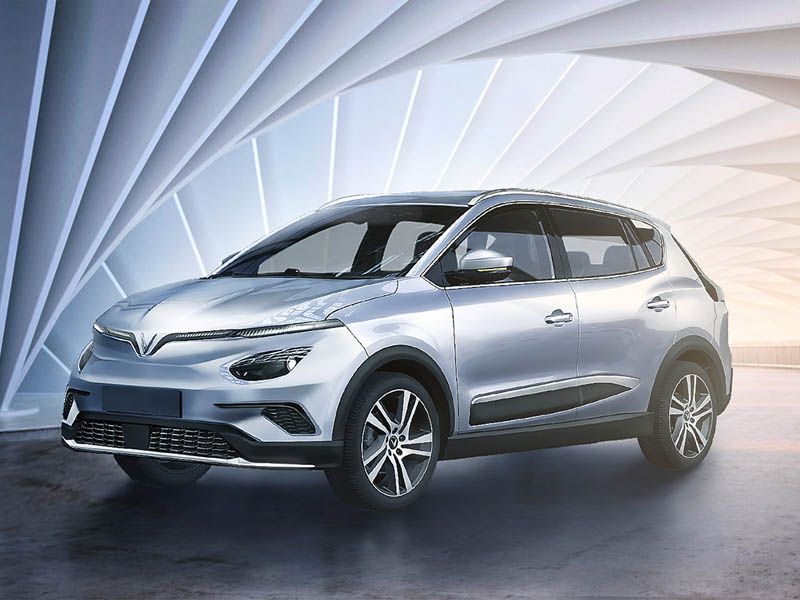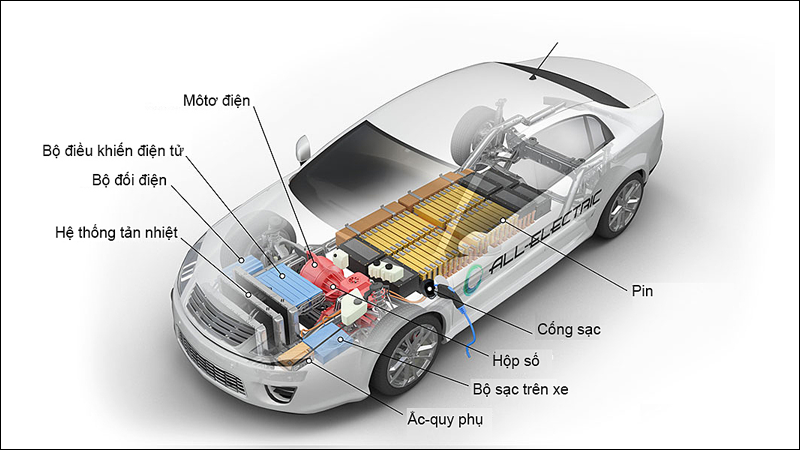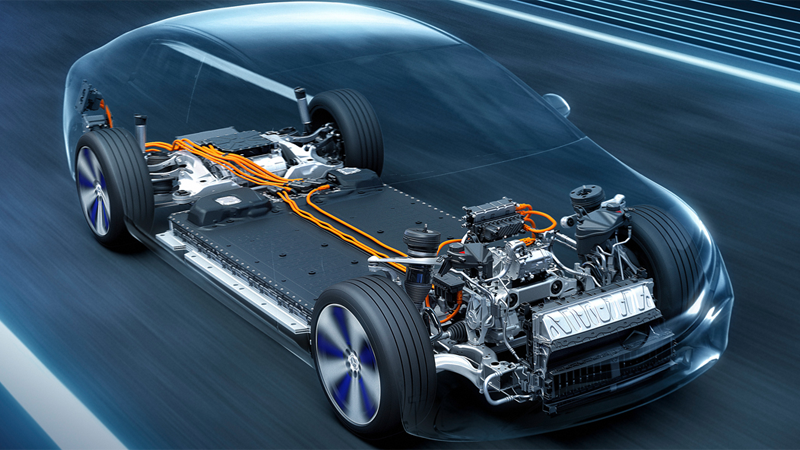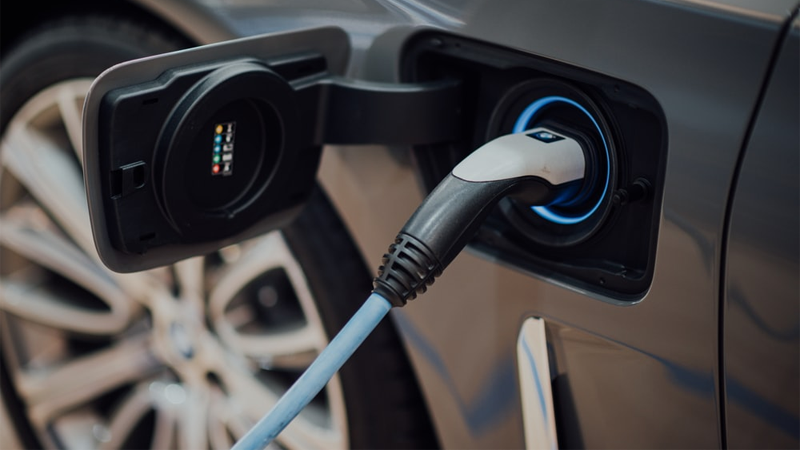In the modern technological era, using laptops or phones not only helps us access advanced smart devices but also gives us the opportunity to witness the rapid progress of means of transportation, including electric cars. So what are the highlights of this unique electric car? This article will introduce you to the unique features of electric cars and how they work.
1. What is an electric car?
An electric car is a car equipped with an electric motor and powered by a rechargeable battery, usually located under the floor of the car. To charge the battery of an electric car, the user needs to connect the car to a charger installed at home or use public charging points on the network.

Electric cars are environmentally friendly vehicles that do not emit CO2.
Increasingly popular, electric cars do not emit harmful CO2 emissions, completely different from cars that use gasoline or diesel.
2. Structure of electric car parts
Compared to cars using internal combustion engines, electric cars reduce the number of moving parts by up to 90%. Here are some of the main parts of an electric car:
– Electric motor
The motor in an electric car is responsible for providing energy to turn the wheels. This type of motor can be DC (direct current) or AC (alternating current), however, the most common type is still AC.
– Inverter
An inverter is a device used to convert DC power to AC power. It can adjust the rotation speed of a motor by adjusting the frequency of the AC current. In addition, the inverter can also change the amplitude of the signal to fine-tune the power or torque of the motor.

Exterior design of an electric car
– Battery
Electric cars use batteries to store the energy needed to operate the car. Once the battery is fully charged, the electric car is ready to operate. The performance of the car's battery directly affects the car's driving range, with the higher the battery capacity, the longer the driving range.
Typically, the batteries used in electric cars today are lithium batteries – a type of battery that has a low discharge rate and is also environmentally friendly.
– Battery charger
The electric car's battery charger is built into the battery. This part is capable of controlling the battery voltage level by adjusting the charging rate in the car.
In addition, the battery charger also has the ability to monitor battery temperature to protect and maintain battery life for a long time.

The internal structure of an electric car. Photo: VnExpress
– Controller
The controller on an electric car can be described as the brain of the car. This part is responsible for managing all the parameters and controlling the charging rate by processing information from the battery.
Furthermore, the controller is also capable of converting the pressure on the accelerator pedal to adjust the speed through the vehicle engine's inverter.
– Charging cable
The charging cable of an electric car is located in the interior of the car. This part is designed to charge the car's battery, either at home or at a public charging point. At fast charging points, there is usually a special charging cable to use.
3. How electric cars work
To understand how electric cars work, it is important to understand the difference between alternating current (AC) and direct current (DC).
- Alternating current (AC) is a type of electric current in which electrons move in cycles, changing direction continuously.
- Direct current (DC) is a type of electric current in which electrons flow in a single direction.

Alternating current has electrons moving in cycles while direct current has electrons flowing in one direction.
Batteries in electric cars operate on direct current (DC). However, the main motor of an electric car, which is the part that provides traction for the car, uses DC current that is converted to AC current through an inverter.
When you press the accelerator pedal, the following events occur:
- The power source converts from DC (direct current) to AC (alternating current).
- The signal from the accelerator pedal is sent to the controller to adjust the speed by changing the frequency of the AC power from the inverter to the motor.
- The engine then drives the wheels through a gear system.
- When you brake or decelerate, the motor turns into a generator, creating energy that is fed back into the battery.

Electric cars operate based on the conversion of direct current into alternating current.
4. Scope of operation
The range of travel per charge depends on the specific vehicle. This depends on the weight, size and power of each vehicle, making their operating ranges different.

Depending on the type of vehicle, the vehicle's operating range will vary.
5. Compare the advantages and disadvantages of electric cars


Electric cars are environmentally friendly but quite expensive
6. Compare the differences between battery-powered electric cars and other types of electric vehicles


Overall, electric cars stand out from other types of vehicles.
7. Some frequently asked questions
– Do electric cars have automatic transmission?
Electric cars don’t come with automatic transmissions. That’s mainly because most internal combustion engines can only reach a maximum of 5,000 to 7,000 rpm before hitting a rev limit. Furthermore, they can only reach their maximum performance within a very narrow range, typically between 3,000 and 4,500 rpm.
In contrast, electric motors can spin faster, reaching up to 20,000 rpm, and their performance levels can be maintained consistently even at high speeds.
– How long do electric car batteries last?
The battery life of an electric car is greatly influenced by the type of charging, however, you can find out more about the battery warranty period from the manufacturers.
Typically, battery life ranges from six to ten years, with the average being around eight years.

Battery life on electric cars typically lasts between 6-10 years.
– Are electric cars reliable?
In theory, electric cars are considered more reliable than cars using internal combustion engines because they have fewer moving parts, reducing the chance of failure.
However, this does not mean that electric cars will have a longer lifespan than traditional cars. The main reason is that the most important part of an electric car, the battery, can lose capacity over time and cannot be recharged many times, significantly reducing the car's operating range.

Electric cars are environmentally friendly and modern, but still have certain limitations.



